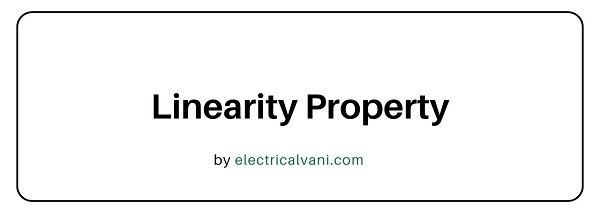In this article, we will learn and understand the linearity property with the help of examples.

Linearity Property
The property of an electrical circuit element that describes a linear relationship between excitation and response is known as linearity property. The linearity property is a combination of the following two properties:
- Homogeneity (Scaling) Property
- Superposition (Additivity) Property
Let’s discuss about each of these two properties in detail.
Homogeneity Property
It is also known as the scaling property. According to the homogeneity property, if the input or excitation is multiplied by a constant (i.e., scaled by a constant factor), then the output or response also gets multiplied (or scaled) by the same constant or factor.
For example, if for excitation E(t), we get a response R(t). Then, according to homogeneity,
For excitation uE(t), we will get the response uR(t). Where, u is the scaling constant or factor.
Superposition Property
It is also known as the additivity property. According to superposition property, the output or response to a sum of inputs or excitations is equal to the sum of responses or outputs to each input applied separately.
For example,
If excitation E1(t) produces a response R1(t) and the excitation E2(t) produces a response R2(t). Then, according to the superposition property,
The excitation E1(t) + E2(t) produces a response R1(t) + R2(t).
Conclusion
So, this is all about linearity property. If you have any questions related to this topic, kindly post in the comment section. I will answer shortly.